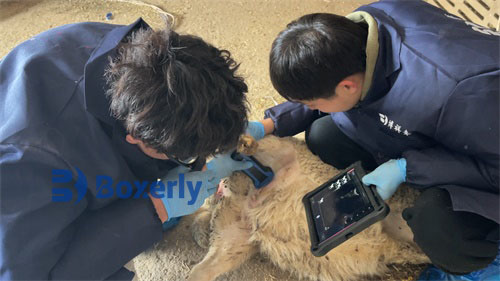The animal ultrasound system emits ultrasound waves that can propagate in a certain direction. The area significantly affected by ultrasonic vibration during the propagation of ultrasound in a medium is called the ultrasound field. Due to the extremely high frequency, short wavelength, and much smaller diameter of the transducer used in animal ultrasound probes, according to certain principles, the emitted ultrasound waves are concentrated in one direction and have obvious directionality, hence the name ultrasound beam.
The ultrasound system for animals emits sound beams with varying widths at different locations. The distribution of the sound beam is in a narrow cylindrical shape, with a width similar to the size of the piezoelectric crystal chip of the transducer. The central axis of the sound beam is called the sound axis, representing the main direction of the sound beam. In the plan view of the sound beam, the distance between its two edges is called the beam width. Within a certain distance of the adjacent transducer, the beam shaped ultrasound field does not diffuse and the beam width is almost equal, which is called the near-field region.
The distribution of sound intensity in the near-field region is uneven, and the length of the near-field is proportional to the square of the radius of the transducer sound source aperture and inversely proportional to the wavelength (A). Beyond the near-field of the animal ultrasound system, the sound beam begins to spread, known as the far-field region. The sound intensity distribution in the far-field area is uniform and gradually decreases, and its diffusion degree depends on the size of the diffusion angle.
The acoustic field characteristics of various Veterinary ultrasound systems and ultrasound transducers or arrays are the determining factors for obtaining and effectively utilizing the echo information of the detected area, and are also the main basis for designing transducers or arrays. The length and diffusion angle of the near-field of ultrasound determine the quality of its directionality.
The higher the frequency and shorter the wavelength of the ultrasound emitted by the animal ultrasound system, the longer the near-field, the smaller the diffusion angle, and the better the directionality of the sound beam. Although increasing the aperture of the sound source can prolong the near-field length and reduce the diffusion angle, the width of the sound beam also increases, resulting in a decrease in lateral resolution. Therefore, modern ultrasound diagnostic devices have added beam focusing technology to improve the quality of veterinary ultrasound images.








